Ghost woodland: bluebells out in the open
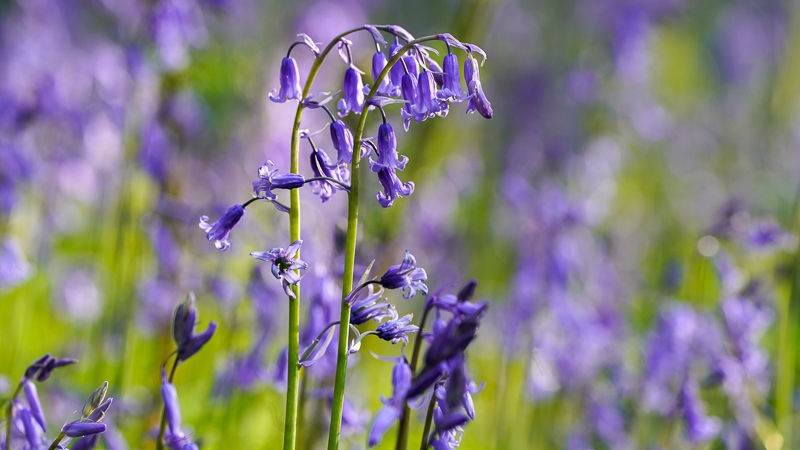
On a sloping hillside in the Harewood Estate a wash of purple covers a field, as if spilled from a paint tin atop the crest. The field is otherwise bare, bar a stately old tree and a young wind-bent whip.
At the top of the hill a fence pens in a small deciduous woodland, beyond which loom taller plantation pines. The sides of the field are bordered by broadleaf trees: scraps of woodland or hedgerow trees allowed to grow tall.
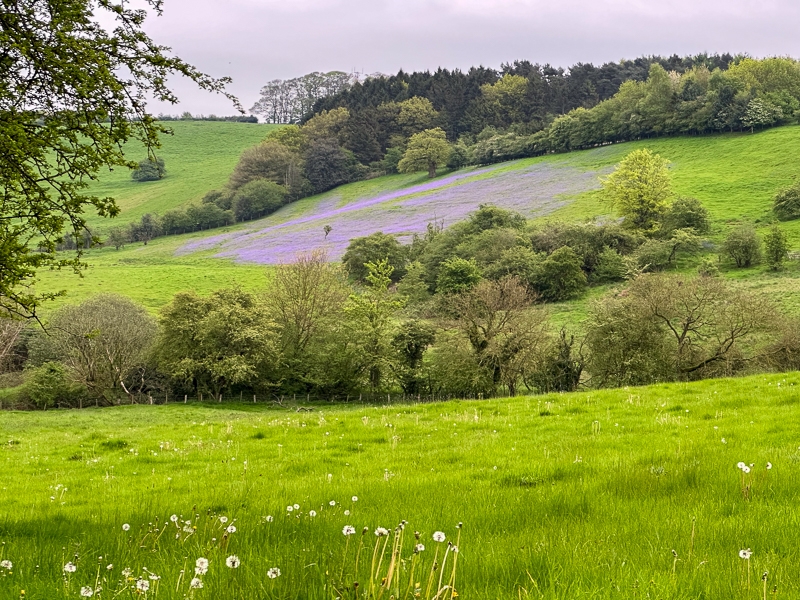
Bluebell field on the Harewood Estate, Yorkshire
The purple spilling across the grass is the shadow of a ghost. Here, where the struggling whip now grows, once stood a strong and ancient woodland.
The bluebells are a voice saying 'woodland was here, and you took it away.'
Bluebells are woodland species, and they're so slow to spread that they're an indicator of ancient woodland. If there are bluebells, the woodland is probably at least 400 years old.
How many years did trees stand here before they were cut down and pulled out?
Grubbed out is the term. Which is apt, given the physically and morally grubby nature of ripping trees from the soil.
Why do the bluebells grow in this field and not its neighbours?
Perhaps woodland was removed from this field more recently, stranding the bluebells, who will still be seen until they are grazed away or wither without the shading of the spring trees. Or maybe this field has avoided grazing pressure for some unknown reason, allowing the bluebells an opportunity to hang on.
Even more interest is added to this scene by the ditch (or dyke) running along the bottom and sides of the field, almost drawing a box around the bluebells. If you look closely you can make out a small bank running along the bluebell side of the dykes.
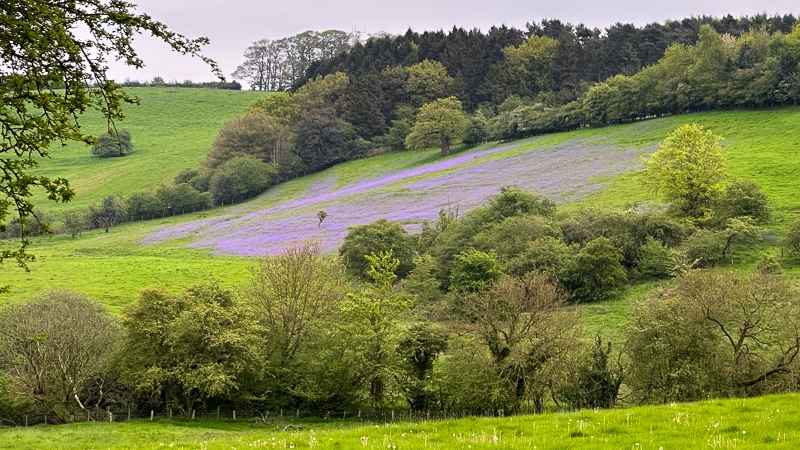
Mary-Ann Ochota explains in Hidden Histories that earthwork ditches and banks are the earliest surviving man-made lines in our landscape - some from the early Neolithic, around 4000 BC. They're difficult to date, and we're not sure what they were for.
The remnants we see today don't represent what they looked like at the time. They would have been much deeper, sharper, the banks higher, and might have had fences or barriers. They might have been defensive or protective, or designed to keep livestock in and out, or they might have been smaller, as a psychological boundary or way of marking ownership or separating areas of different land use.
Existing ancient woodlands often have ditches and banks around their perimeter, or sometimes through their middle (probably indicating the wooded area has increased in size since the ditches were made), so we know that they sometimes delineated areas of woodland. Perhaps these ditches did so too, and the woodland is no longer there.
Satellite images often help us to read landscape clues, but the historical images for this site don't tell me much, except that the field has been without trees for at least 21 years (a short time to bluebells). The images show that the field has been grazed by sheep, but none of the images show the bluebells. There are few images, and they're not taken at the right time of year.
There are loads of bluebells in open fields in Yorkshire, like these bluebells casting purple shadows in a valley near Appletreewick. You'll notice the rest of the vegetation is different in the areas where the bluebells grow; rough and varied, unlike the uniform green sheep fields in the distance.
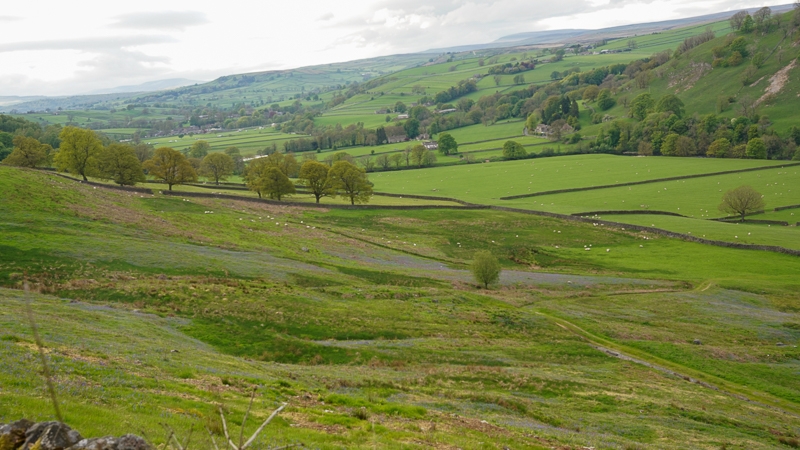
Bluebells in the open in the Lake District remind us that our uplands were once wooded.
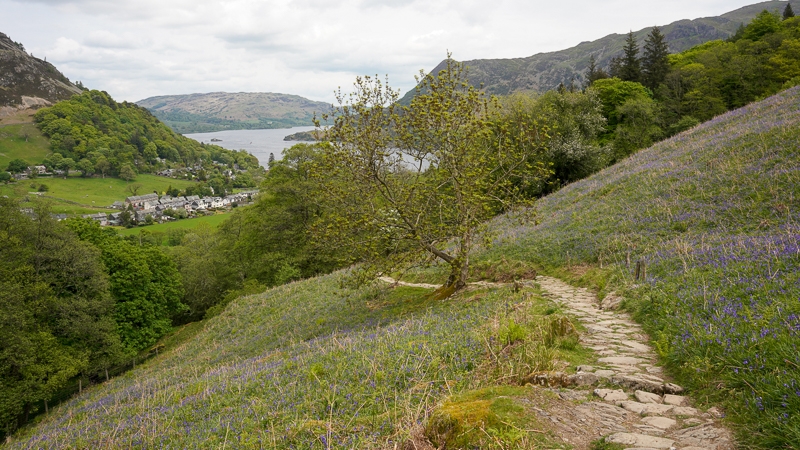
Bluebells in the open above Ullswater
They stretch up into the peaks, looking across at woodland on the other shore that perhaps represents the habitat that used to exist on many of the slopes.
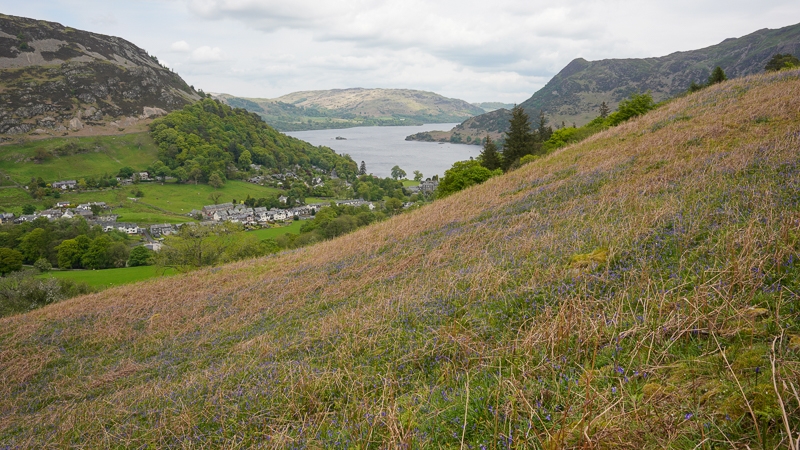
Bluebells above Ullswater
Sometimes bluebells and bracken appear in the open together. Bracken is another indicator that an area used to be wooded.
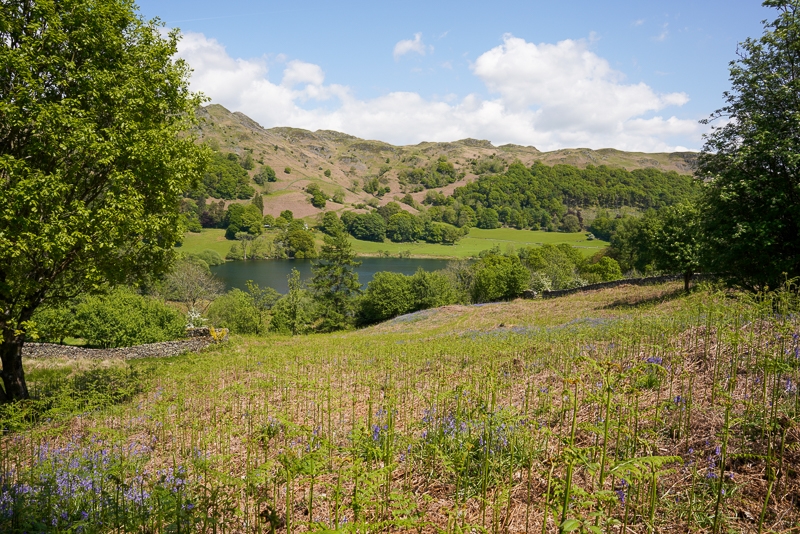
Bluebells and bracken above Loughrigg Tarn
Bluebells in the open are a reminder of what used to be, but they can also be a promise of what could be once again.
Share with your friends
Subscribe to learn more
Join me in exploring our natural world and cultural heritage as we learn how to protect and restore it. Get notified on my latest posts and a monthly newsletter on wider conversation topics for us to chat about.
Recent Posts
If you enjoyed this one, then you might like these too.